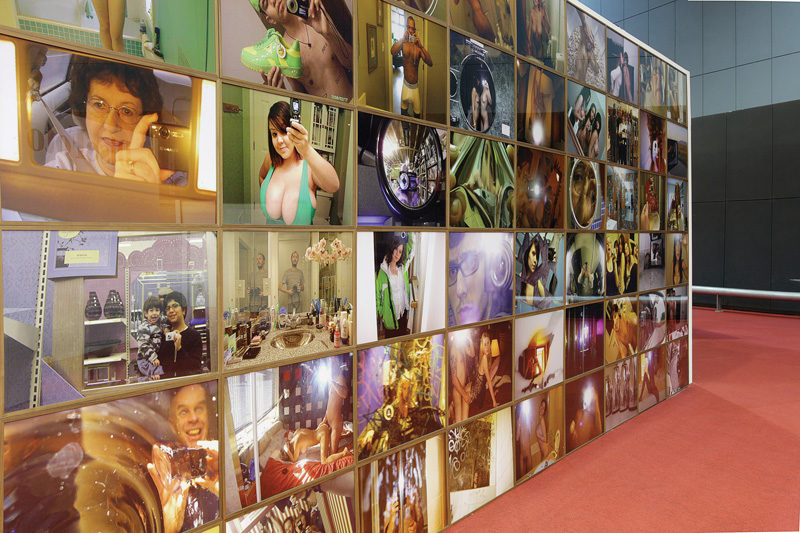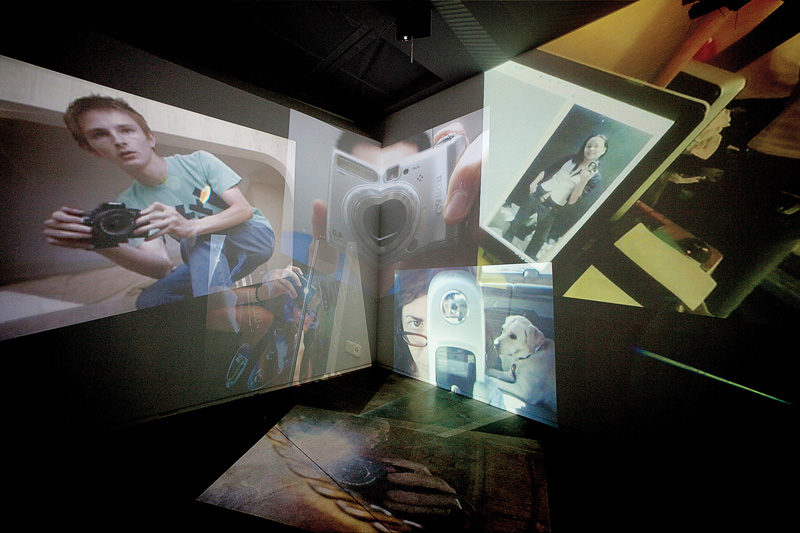[Winter 2013]
Alexis Desgagnés: For ten or fifteen years, the concept of the “death of photography” has been on everyone’s lips when current issues in the photographic medium are discussed. It’s as if a certain consensus has arisen around the idea that over the last decade there has been a paradigm shift from silver halide (analog) photography to digital photography. Many people involved in the discourse on photography have championed the idea that the digital revolution has led to the death of photography and that in the next few years we will be seeing the advent of a post-photographic era. What is your opinion about the ambient morbid tone in the discourse on photography? Do you feel that the death of photography is a reality?
Joan Fontcuberta: I put these questions into a Darwinian perspective. That is, the media are evolving, culture is evolving in a way that resembles the evolution of living beings. So, using this metaphor, we could say that a meteor fell on culture twenty years ago, and it changed our environment. On the one hand, there are photographers who don’t see that the atmosphere is beginning to change, that the light is different; I call them photosaurs. On the other hand, there are photographers who are beginning to adapt to a climate, a situation, and a landscape that are undergoing a dramatic transformation. I think that that this meteorite is digital technology. Digital technology is not simply a change of support for the image; mainly, it signifies the beginning of a cultural change, a change in behaviours, lifestyles, and so on. Digital technology has caused a total metamorphosis in human relations, but also in our relations with communications, the economy, and so on. Of course, the image and photography have not been left out of this revolutionary context.
Today, I think the essential thing is that this technology, which is now quite mature, has made it possible to create a completely different system for transmission of and access to images. In combination with social networks, mobile telephones, and the massification of cameras, the Internet represents a second digital technology revolution, affecting the nature of the photographic image and, simultaneously, how it is analyzed. On the Internet, the image has escaped its traditional domain and must be thought of in a completely different context. The germinal values of photography – memory, truth, and archive – are adrift, and I don’t know if we can still speak of photography. The use of the awkward term “post-photography” testifies to the need to find a word that truly designates what we have in our hands when we do digital photography.
AD: The traditional parameters that, until quite recently, oriented our comprehension and appreciation of photography must now be reassessed in the light of the changes that you’re describing. Similarly, do you believe that we must also redefine the status of the photographer, and even more that of the artist, who, envisaging photography on the margin of the dominant relations with the medium, uses it as a means of creativity?
JF: Absolutely. I would say, radically, that photography done by artists has become boring, that photography done by professionals has become pathetic, and that our only hope may reside in the photography without quality made by amateurs in vernacular domains. The idea of “quality” refers to the question of canon: what standards can we use to assess how interesting images are? Today, these standards are no longer intrinsic to the images, but arise more from their circulation and use, which give them their significance. The image, itself, is nothing: it now bears an element of communication, transaction, or negotiation that brings the photograph into a black market on semiotics. And so, given this image saturation, I think that the question of the status of the artist, the creator, requires an environmental, ecological response: we must stop producing new images and, instead, recover and recycle existing images in order to recontextualize them. Therefore, creativity now consists of assigning new significances to these images through a system of prescriptions. The act of creation no longer resides in production, as once defined in the industrial economy. Rather, it consists in the management of ideas, the allocation of new ideas to existing images, which must be resemanticized. In this context, artists such as Erik Kessels and Joachim Schmid, in my view, are helping to create a clear updating of our visual culture.
The image itself is nothing: it now bears an element of communication, transaction, or negotiation that brings the photograph into a black market of semiotics.
AD: Doesn’t a position like the one you’re advocating reduce the range of artistic possibilities to the act of appropriation alone?
JF: No. In a context in which everything seems to have been photographed, we are still lacking certain images, and this makes possible, for example, a discipline of documentary photography focused on territories that are still virgin in our visual culture. But it is true that, on the whole, the super-saturation of images makes them worthless. They become trash – but without garbage it would be impossible to understand postmodernity. I believe, following Walter Benjamin, that the modern artist is a flea-market dealer: someone who can pick through the shit to find treasures. With this idea of “prescriptions,” I emphasize the fact that the artist’s work consists of choosing elements and placing them in context within a rhetorical system that highlights their conceptual value.
AD: For many years, your works and writings have testified to your skepticism with regard to shared belief in the supposed value of photographic truth. Do you think that this question is now resolved?
JF: I would say that it has changed. When my career began, about forty years ago, the public had blind trust in photographic evidence. Today, digital technologies show us, very directly, how easy it is to intervene in the information of an image without leaving any trace. In the era of Photoshop, the documentary value of the photograph is in crisis. This implies that
all the critical mistrust, the skepticism, that formed the basis of my projects must now be adapted to a new situation. I’m still interested in the question of truth in photography, but I’m trying to answer it on the basis of new elements. For example, my recent project on amateur self-portraits constitutes an essay on lying in the construction of identity. In these self-portraits, the presence of the camera dramatizes reality and thus makes it artificial. Today, we live in the appearance of information, which swallows up reality.
AD: This idea is not far from the notion of spectacle as Guy Debord defines it. Can we see your work as a critique of the spectacular nature of the image economy?
JF: Yes, I’m convinced that my work, beyond a semiotic and poetic façade, is political. Today, the stakes of politics live in the image. We, the “makers of images,” therefore have, more than ever, a responsibility with regard to society, for the images that we make are likely to be used to format thought. Think of Bill Gates, who said, “Whoever controls images, controls minds.”
AD: For the exhibition “From Here On,” you and your colleagues in fact revived the genre of the manifesto. To my mind, the historic importance of this exhibition may be due to the fact that it catalyzes the fundamental issues with which the world of photography has been confronted over the last decade and against which the signatories to this manifesto take a strong, authoritative position. Is this a desire to renew the tradition of avant-gardes?
JF: Of course, there is a nod to historical avant-gardes. But, to be honest, beyond a reflection on the lives of the image in the Internet age and the role of Google, Facebook, Wikipedia, and the like as new creative tools, this exhibition was really born out of a playful desire for collaboration shared among a few friends. The corpus that we put together is, in a way, a barometer of the current situation in photography. And the manifesto makes an observation about the profound changes engendered by the introduction of digital technologies and proposes a way of surviving in this new media, technological, aesthetic, and sociological climate.
AD: In the essay that he wrote for the exhibition catalogue, Clément Chéroux, referring to Roland Barthes, considers that artists’ “approprationism” with regard to images gleaned on the Internet achieves the death of the creator. At the same time, it seems to me that your manifesto’s statement is cathartic in nature, in that it opens up an infinite field of possibilities for creators. What do you think about this?
JF: It’s true that one of the interesting things about this exhibition, I think, is the questioning of the notion of creative artist. We are in a time of transition: there are anonymous works, collective works, interactive works . . . In short, a number of nuances are now affecting the monolithic unity of the traditional notion of creator. An entire image economy is based on the concept of copyright, but the current situation raises a political and philosophical question: do we want a society based on the principle of ownership or the principle of sharing? This is a choice to be made. If, given the current evolution of photography, artists and intellectuals conclude that they want to subscribe to the latter principle, then it is a death sentence for copyright as we have known it from the legal and economic points of view. In terms of what concerns me, I believe that the function of the creator still exists, but it’s losing its former “physicality” and being inscribed in the flow of thought. Finally, I believe that “appropriationism” has become so institutionalized a practice that we have to move beyond it. I propose the idea of no longer “stealing” images but adopting them. The word “adopt” has a Latin origin, ad optare, which means “to choose.” In the family sphere, adoption is an affirmation of the superiority of culture, or law, over nature, or birth. Whereas appropriation is private, adoption is by definition a form of public declaration: to appropriate is to capture, whereas to adopt is to state a choice. When post-photographic artists adopt an image, they are the guardians of a step in that image’s life, they manage its growth, but they don’t necessarily feel like they are its biological parent.
Translated by Käthe Roth
Alexis Desgagnés, an art historian, curator, and artist, is artistic director of VU, centre de photographie and a lecturer at the Université de Montréal and Université Laval. A regular contributor to Ciel variable, his research concerns mainly the history of photography of the past and present. His photographs have been exhibited at L’Œil de poisson and in Inter art actuel and Der Greif. The present interview is part of the project Adieu photographie ? Vies et morts de la photographie à l’ère numérique.




